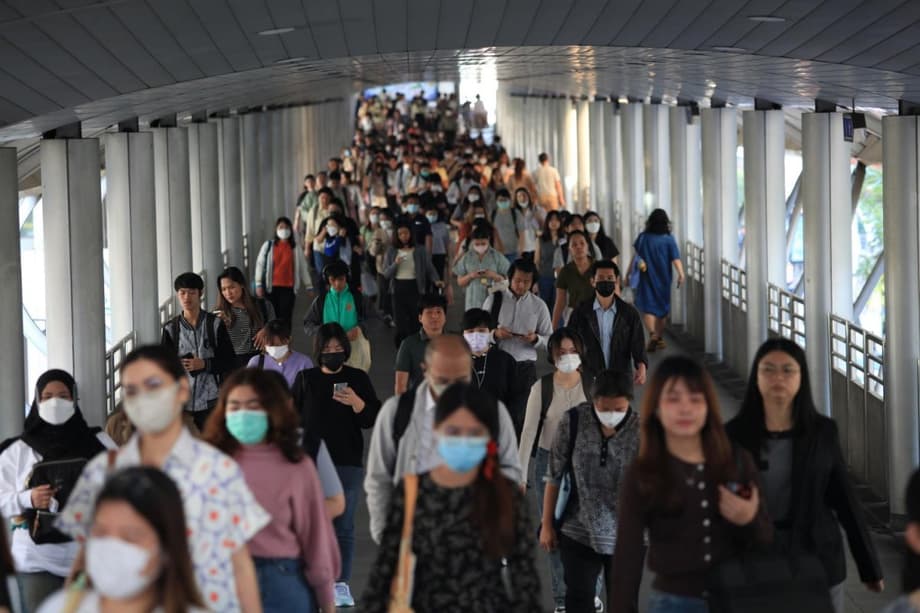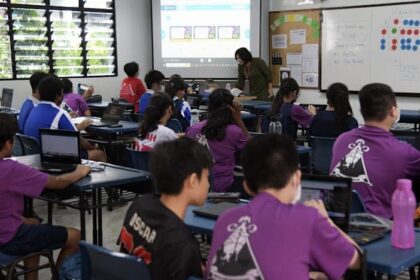Retirement rethink gains momentum as Thailand ages
Thailand has opened a high stakes debate over whether people should work longer. Prime Minister Anutin Charnvirakul has floated raising the statutory retirement age from 60 to 65, arguing that longer lives and a shrinking workforce call for a new balance. The idea lands at a sensitive moment. Households face rising costs, businesses are working through a soft economy, and the country is moving rapidly toward a super aged society where more than 28 percent of citizens are older than 60 by 2034. Any change to the exit age from work touches the incomes of older people, the labor market prospects of the young, and the sustainability of pensions.
- Retirement rethink gains momentum as Thailand ages
- What is being proposed and who is covered
- The demographic math behind the debate
- What later retirement can deliver
- Business realities and youth opportunities
- Pensions and social security are already being reworked
- A new savings channel, the retirement lottery
- Guardrails for a fair transition
- What to watch next
- Key Points
Supporters say a higher retirement age could help older Thais maintain earnings, delay pension payouts, and keep experienced talent in critical roles. Thailand already records fewer births than deaths, and the total fertility rate has fallen below the level needed to replace the population. That means fewer workers will support more retirees. A later retirement can ease pressure on public finances and social insurance, especially as people live many years beyond 60. In a country where many fear outliving savings, five extra years of steady pay can be the difference between a fragile old age and a more secure one.
Business groups are cautious. Firms worry about higher payroll costs and potential bottlenecks for promotions if senior staff stay longer. Some companies have turned to early retirement packages, automation, and artificial intelligence to manage expenses. The hotel sector, which relies on physical roles and round the clock operations, prefers flexible arrangements for older workers rather than a blanket mandate. Many operators want the option to keep veteran staff in supervisory, training, or guest relations roles while avoiding strain in demanding front line positions.
What is being proposed and who is covered
The current conversation centers on civil servants. An initial step under discussion would raise the retirement age for government employees from 60 to 65. That change would directly affect roughly 1.75 million civil servants. It would not automatically extend to the private sector, where about 18 million workers are covered under Social Security and employer policies. Any broader shift for private employers would require separate policymaking, consultation with unions and employer groups, and alignment with Social Security rules.
Several state agencies have already piloted extensions for specific roles that require deep expertise. These pilots offer a useful test bed. They show where experience is most valuable and where job design needs updating to suit older workers. A nationwide rule, however, needs more than pilots. It must match Thailand’s diverse labor market, from small family owned firms to multinational manufacturers, and from physically demanding jobs to knowledge based work.
How an extension could be structured
Policymakers have tools to make a change smoother. A phased schedule, for example, could raise the retirement age by a few months each year over a decade rather than all at once. Optional extensions for private employers could be paired with guidelines that prevent abuse or forced retention. Exemptions could protect workers in hazardous or heavy labor roles. Transitional rules for those close to retirement would limit disruption, while targeted support could help firms redesign jobs to fit older staff.
The demographic math behind the debate
Thailand faces a classic demographic squeeze. Births have fallen, people are living longer, and the share of older residents is climbing every year. The total fertility rate has dropped below the replacement level of roughly 2.1 children per woman. In recent years, deaths have outnumbered births. As a result, the old age dependency ratio, the number of people 65 and older relative to those of working age, is rising. More retirees drawing pensions and health services will depend on a smaller pool of contributors.
Global experience helps explain the stakes. Research on falling fertility notes that low birth rates can weigh on growth as the labor force shrinks, while a higher share of older people strains social safety nets and pension systems. At the same time, with fewer children to support, societies can invest more in productivity, skills, and technology. Thailand sits squarely in this transition. The country is on track to become super aged by the mid 2030s. That reality pulls pension adequacy, healthcare budgets, and the future of work into one policy conversation.
For households, longevity is a blessing that also requires planning. A retirement that begins at 60 can stretch 25 years or more. If savings are thin, those years can be financially precarious. For the state, costs rise as healthcare use expands and pension obligations grow. For employers, recruitment and training must adapt to an older workforce, while keeping pathways open for young talent. A later retirement age will not solve every challenge, but it directly engages the arithmetic of an aging society.
What later retirement can deliver
Evidence from other countries suggests that raising the normal retirement age tends to lift employment among older workers. Recent modeling by the Organisation for Economic Co operation and Development indicates that a one year increase in the normal retirement age can raise the employment rate for people aged 55 to 74 by roughly 1.5 to 2.3 percentage points, depending on country specifics. That effect is stronger when early exit pathways are limited and when the gap between the minimum age for any pension and the normal age for a full pension is small.
Two design points matter. The first is the difference between a minimum retirement age, when someone can first claim reduced benefits, and a normal retirement age, when full benefits apply. Large gaps can lead to early exits that drain the system and limit gains in older worker employment. The second is the set of alternative exit routes, such as disability or unemployment schemes, which can be used as substitutes for early retirement. If those routes remain wide open, a higher retirement age yields smaller gains. A well designed reform aligns these levers to support work while protecting dignity and health.
Timing is another practical issue. Retirement rules often include grandfathering, which protects those near retirement from abrupt changes. That means reforms take years to fully show results. Acting early can prevent sharper adjustments later. Gradual steps also give employers and workers time to adjust job roles, training plans, and benefits.
Business realities and youth opportunities
Private employers raise fair concerns. Keeping staff to 65 can add salary and benefit costs, especially in firms where pay rises steadily with tenure. In sectors under pressure, managers worry they may need to restructure or delay promotions for younger employees. Some fear a cascade where a higher retirement age pushes companies to trim headcount or limit hiring.
Labor market research often finds that older and younger workers are not simple substitutes. Experienced staff pass on knowledge, stabilize teams, and improve service. They also spend income in the local economy, which supports demand. Younger workers bring new skills and energy. Economies that make room for both groups tend to benefit. The key is to redesign work so that older staff can continue contributing without physical strain, while younger staff see clear advancement paths.
Jobs that strain aging bodies
Hotels, logistics, construction, and some manufacturing roles involve heavy lifting, long shifts, or night work. In these settings, rigid extensions risk harm. The hospitality industry has called for flexible arrangements that keep seasoned staff in supervisory, training, concierge, or quality control roles. Firms can rotate demanding tasks, invest in ergonomic equipment, and expand part time and project based roles for older employees. These steps reduce risk while preserving know how that is valuable for service quality and safety.
Pensions and social security are already being reworked
The debate over retirement age sits alongside a separate effort to improve pension formulas and governance. The Social Security Office is considering reforms for insured workers under key sections of the Social Security Act. A shift to a lifetime average earnings formula, often called CARE, would move away from calculating pensions based only on the final years of salary. Lifetime averaging typically improves fairness by better reflecting actual earnings patterns. It can also strengthen sustainability by reducing incentives to inflate pay late in a career.
Recent public consultation on these reforms drew controversy when an online hearing was flooded with automated responses. That episode eroded trust and highlighted the need for stronger protections against manipulation. Confidence is essential for any pension change. Workers need clear, accurate information about benefits, contribution rates, and the reasons behind reforms. Transparent investment management and oversight are equally important for the health of the fund that supports tens of millions of contributors.
A new savings channel, the retirement lottery
Lawmakers have also advanced a novel savings tool to help people build nest eggs. The House of Representatives approved a bill that allows the National Savings Fund to sell retirement lottery tickets priced at 50 baht each, with purchases capped at 3,000 baht per person per month. The scheme is designed as a savings product. Participants can receive prizes in weekly draws, and every baht that does not win is credited to a personal savings account. The full amount, plus investment returns, becomes available at age 60. The first issuance is expected in the fourth quarter of 2025, subject to final approvals and implementation planning.
The deputy finance minister, Paopoom Rojanasakul, has stressed the character of the program. He framed it as a legal alternative to illegal gambling, structured to build savings with guaranteed returns. After presenting the plan to lawmakers, he offered a simple description of the intent.
Deputy Finance Minister Paopoom Rojanasakul said the retirement lottery is structured saving, not gambling, and that participants will receive back every baht invested with returns at retirement.
Key details will be managed by directives, including prize levels and rules for early withdrawal in specific cases such as disability. The monthly cap is designed to avoid stockpiling by wealthy buyers. If the program delivers as designed, it could strengthen retirement balances for younger workers, who will live with the realities of population aging for decades to come.
Guardrails for a fair transition
Thailand can thread the needle between financial sustainability, business realities, and dignity at work. A package approach would pair a later retirement age with measures that protect health, keep employers competitive, and make work after 60 attractive and feasible.
- Phase the change in small steps with clear dates so households and employers can plan.
- Offer flexibility for private firms, including optional extensions, part time roles, and project based contracts for older staff who want to keep working.
- Protect workers in hazardous or physically intense jobs by allowing earlier exits without penalty and by funding job redesign and ergonomic upgrades.
- Expand midcareer training so older workers can pick up digital and management skills that match today’s roles.
- Review pay structures that escalate with tenure and shift toward compensation tied to responsibilities and performance.
- Adopt strong anti age discrimination rules and enforcement to prevent hiring and promotion bias.
- Coordinate pension formula updates with retirement age policy so incentives align toward longer, healthier working lives.
- Support small and medium firms with tax credits or grants for training, safety upgrades, and flexible scheduling tools.
- Strengthen preventive healthcare and workplace wellness so more people can work safely into their sixties.
- Use targeted migration policy, where appropriate, to ease specific skill shortages while domestic training ramps up.
What to watch next
The retirement age proposal will require extensive consultation. Raising the age for civil servants can be done through changes to regulations and relevant laws. Extending any policy to the private sector would involve labor law, Social Security rules, and close coordination with employer and worker representatives. Grandfathering rules will determine how the change affects those nearing retirement. The Ministry of Labour, the Social Security Office, and the Budget Bureau will need to model costs, contribution rates, and workforce effects. Parliament may hold hearings, and state agencies could expand pilots to collect evidence on health, productivity, and satisfaction outcomes.
The retirement lottery will move through the Senate and through detailed rulemaking at the National Savings Fund. Early communications will matter. People will want to know how to participate, how prizes and returns work, and how balances are protected. For both the retirement age debate and the savings program, transparency and clear timelines will build credibility. The decisions made in the next few years will shape how Thailand grows older, how long people work, and how secure those later years feel.
Key Points
- Prime Minister Anutin Charnvirakul has proposed raising the retirement age from 60 to 65, starting with civil servants.
- Business groups prefer flexible options over a blanket mandate, especially in physically demanding sectors such as hotels and logistics.
- Thailand is moving toward super aged status by the mid 2030s, with low fertility and a rising old age dependency ratio.
- OECD research finds that each one year increase in the normal retirement age can lift older worker employment by about 1.5 to 2.3 percentage points.
- Design details matter, including the gap between minimum and normal retirement ages and limits on early exit pathways.
- The Social Security Office is weighing a shift to a lifetime average earnings formula to improve fairness and sustainability.
- An online consultation on pension reform was marred by automated responses, underscoring the need for stronger governance and trust.
- A retirement lottery savings product has cleared the House, with 50 baht tickets, a 3,000 baht monthly cap, and balances refunded with returns at age 60.
- Policy options include phased implementation, flexible work after 60, job redesign for physically intense roles, and stronger anti age discrimination rules.
- Next steps include broad consultations, legal changes for the civil service, coordination with Social Security for private workers, and rulemaking for the retirement lottery.












